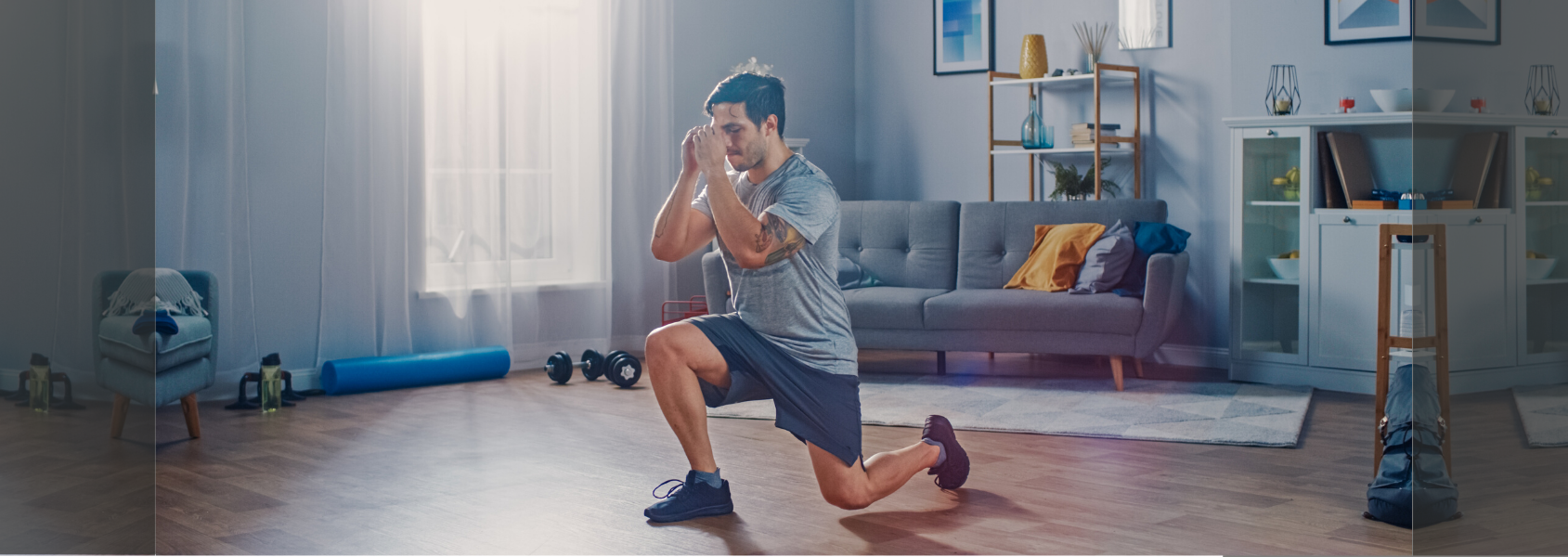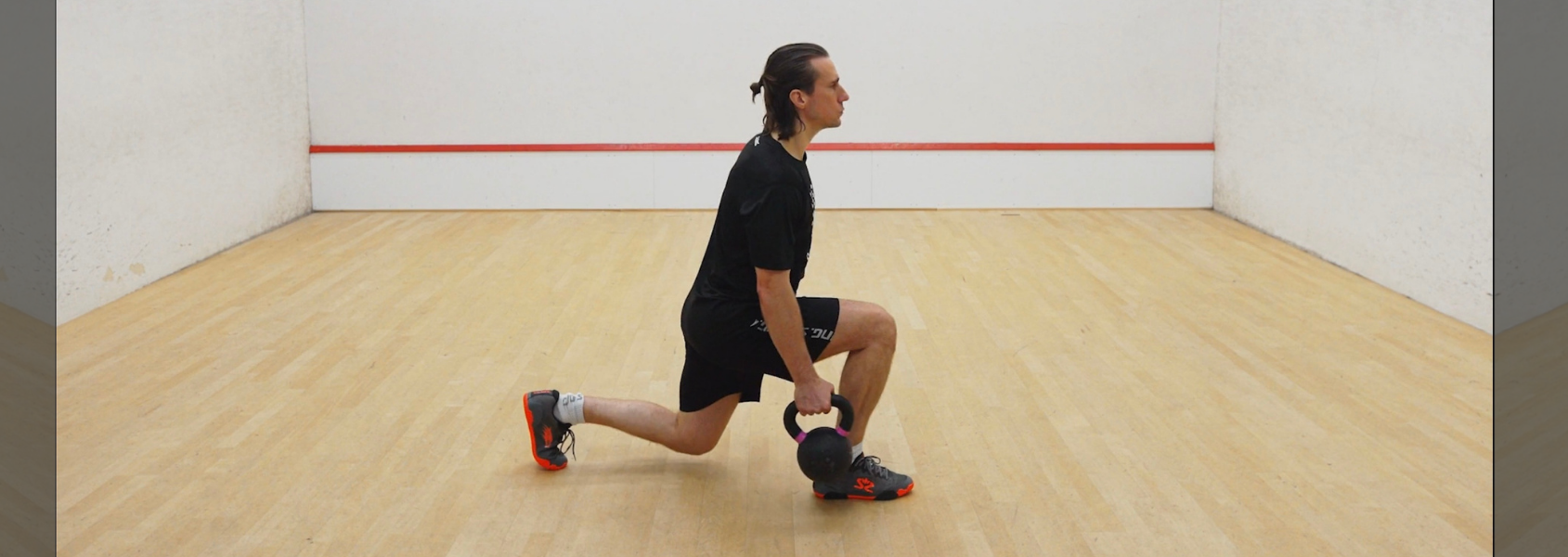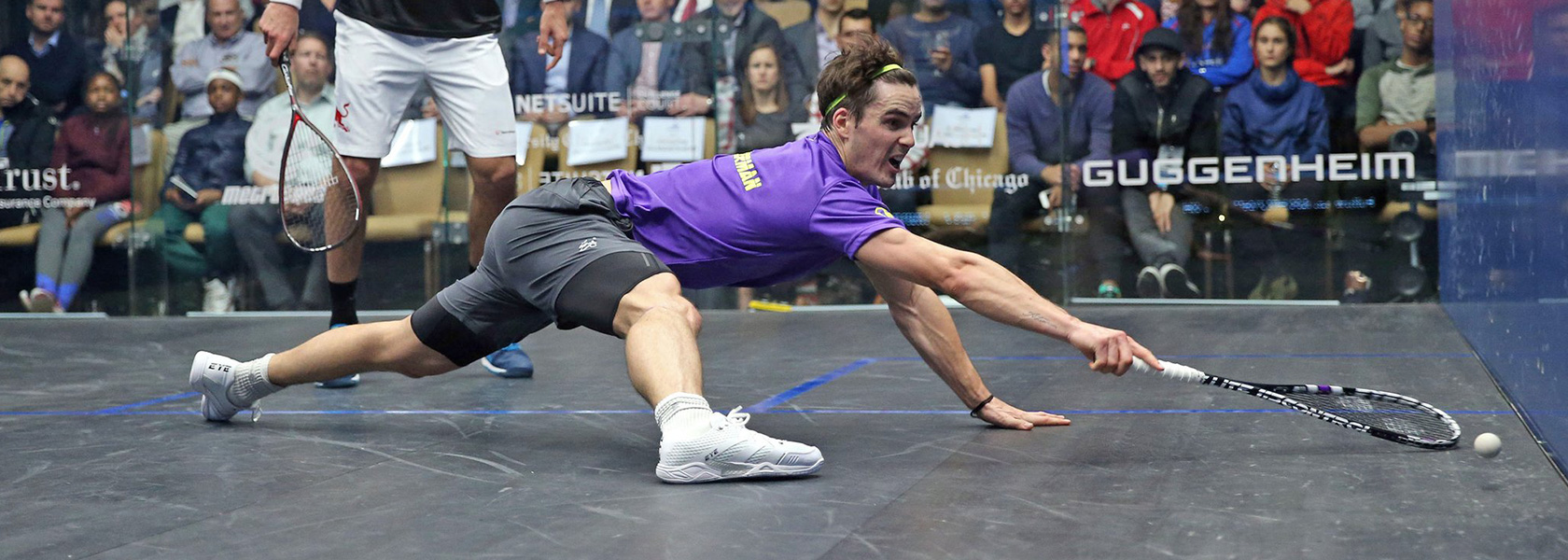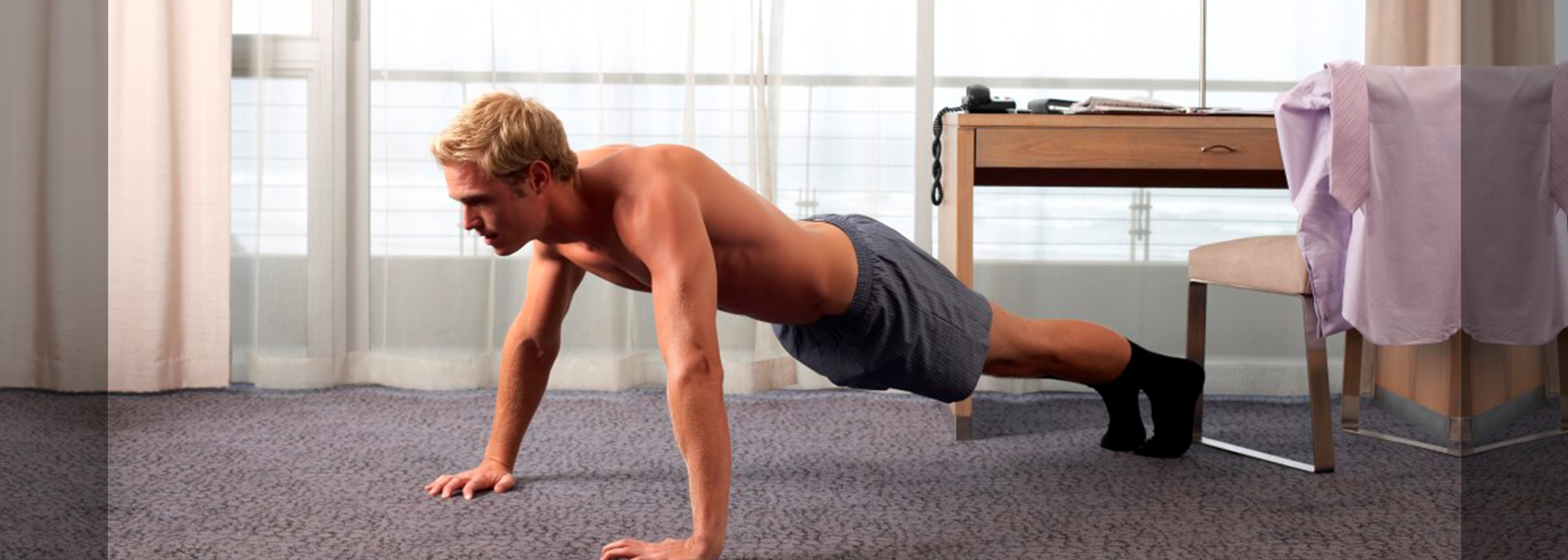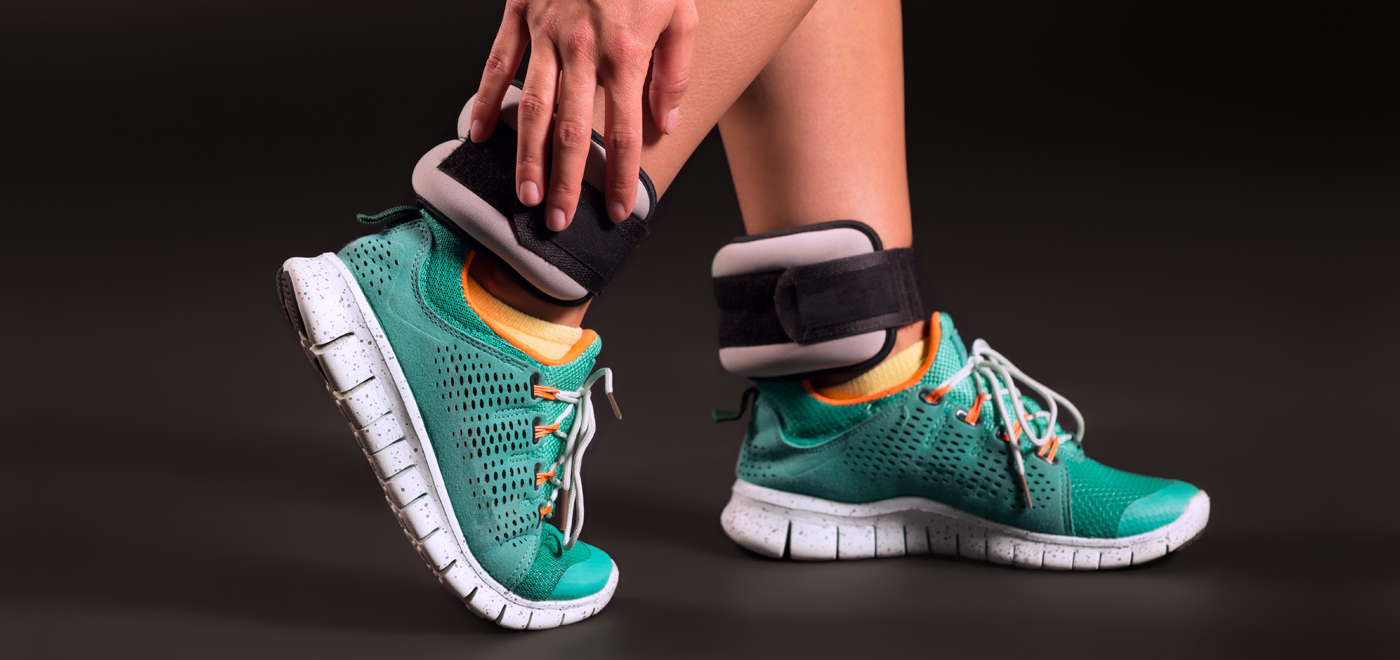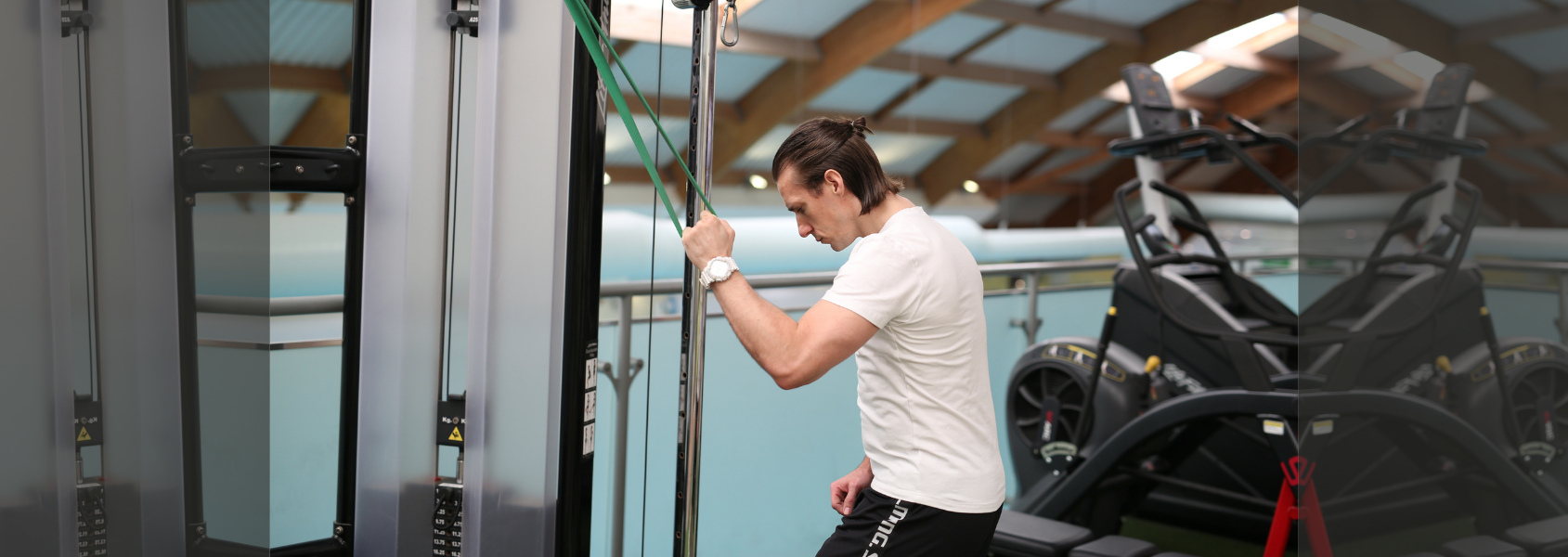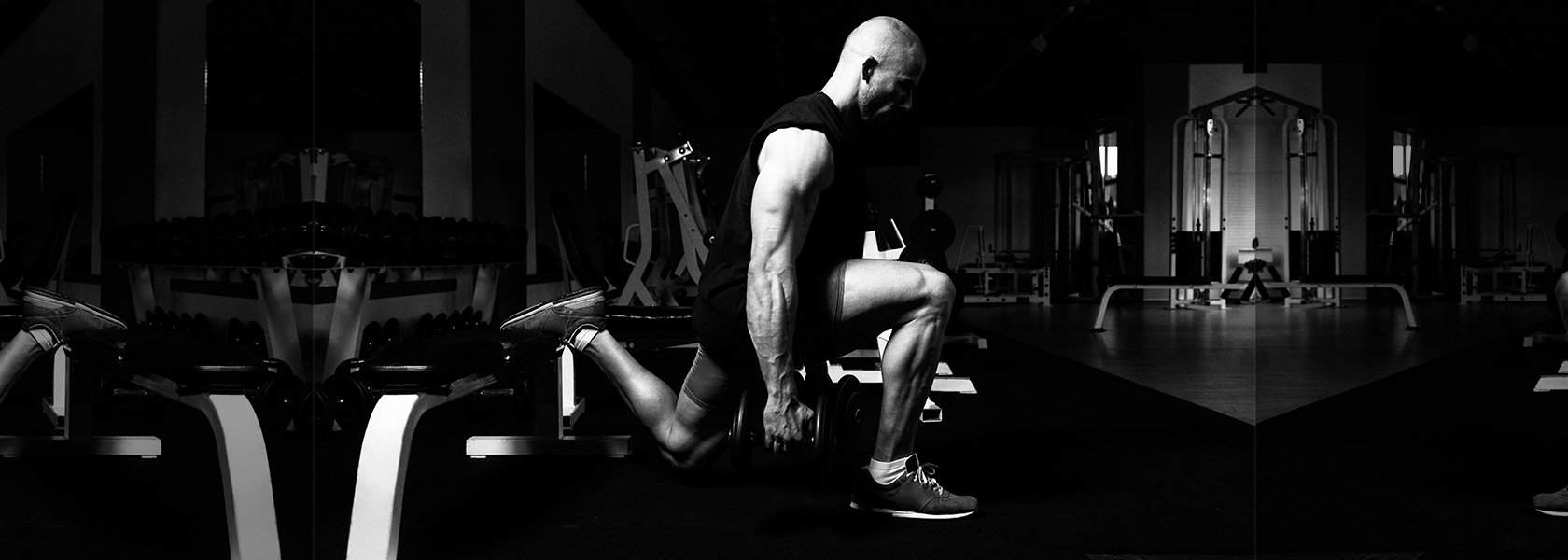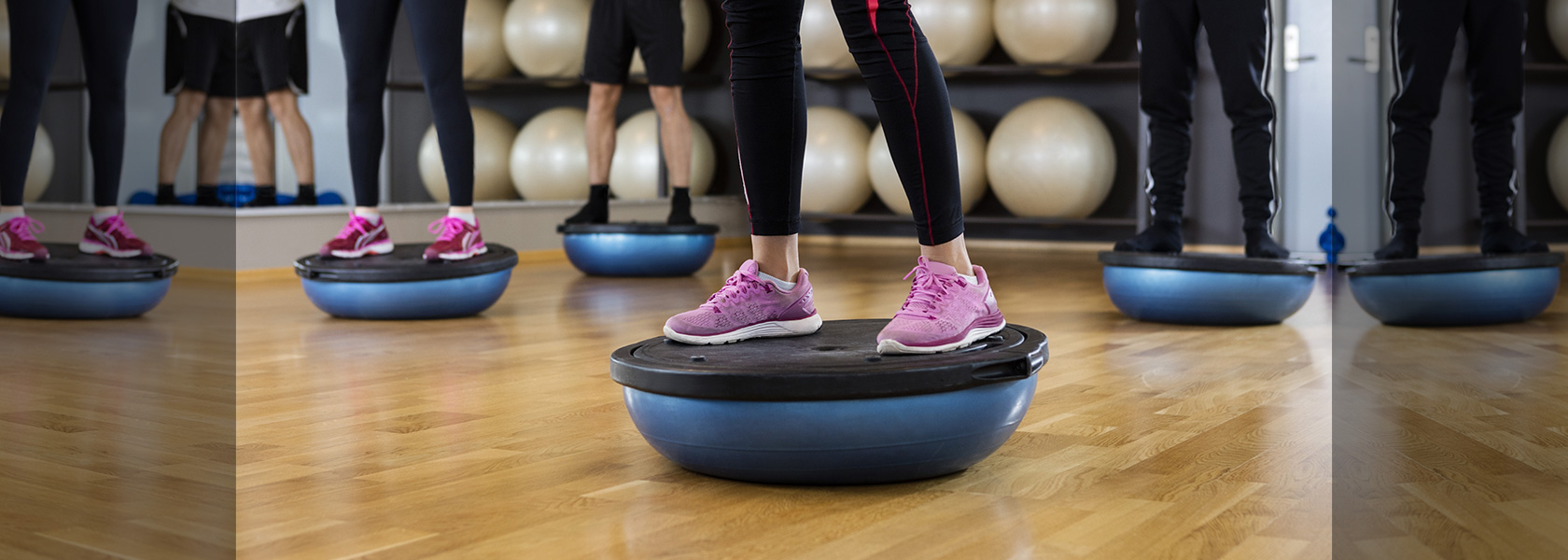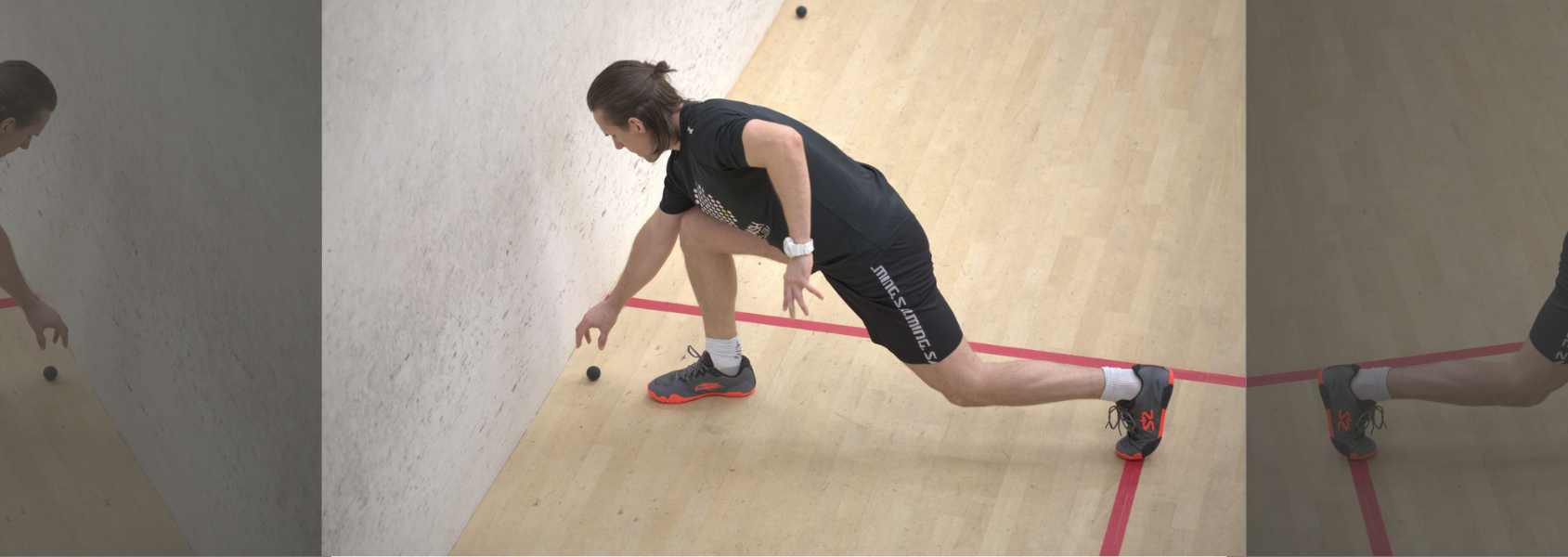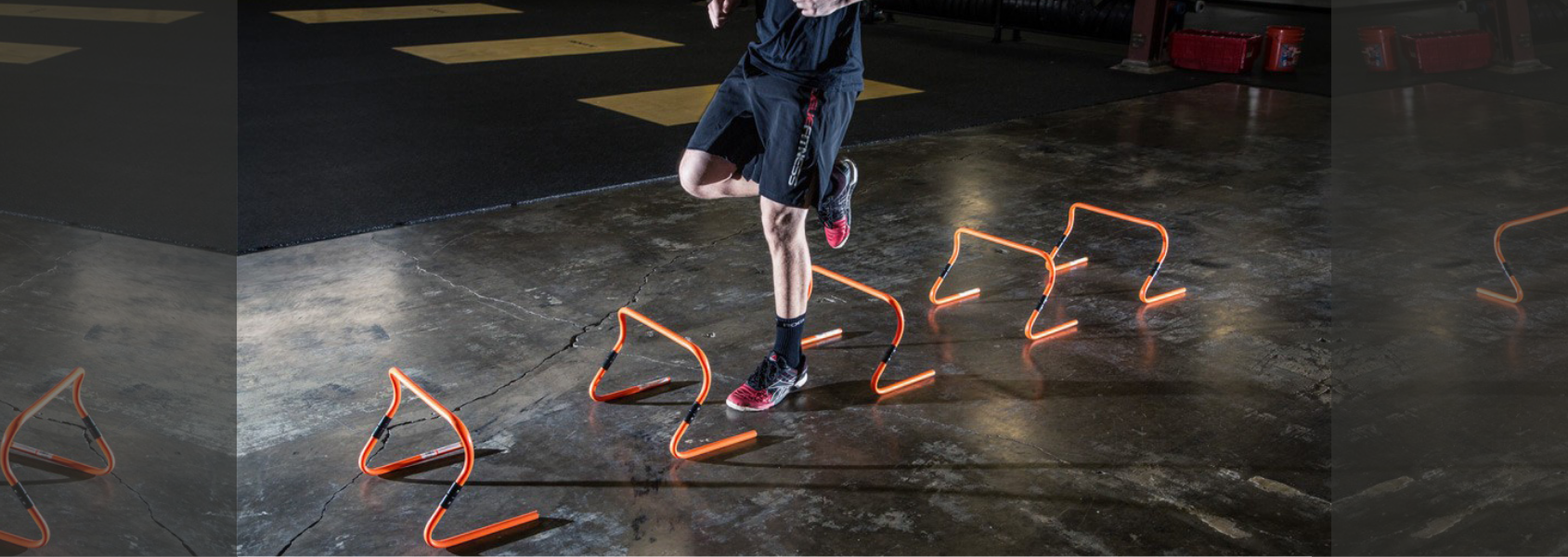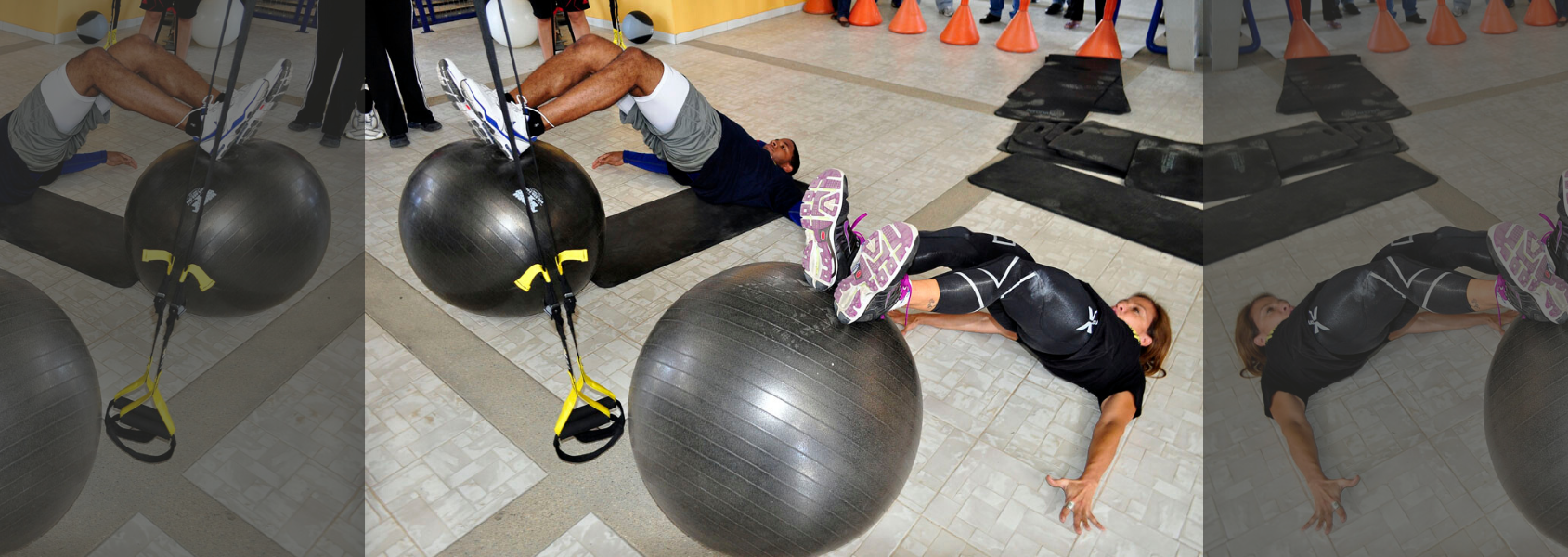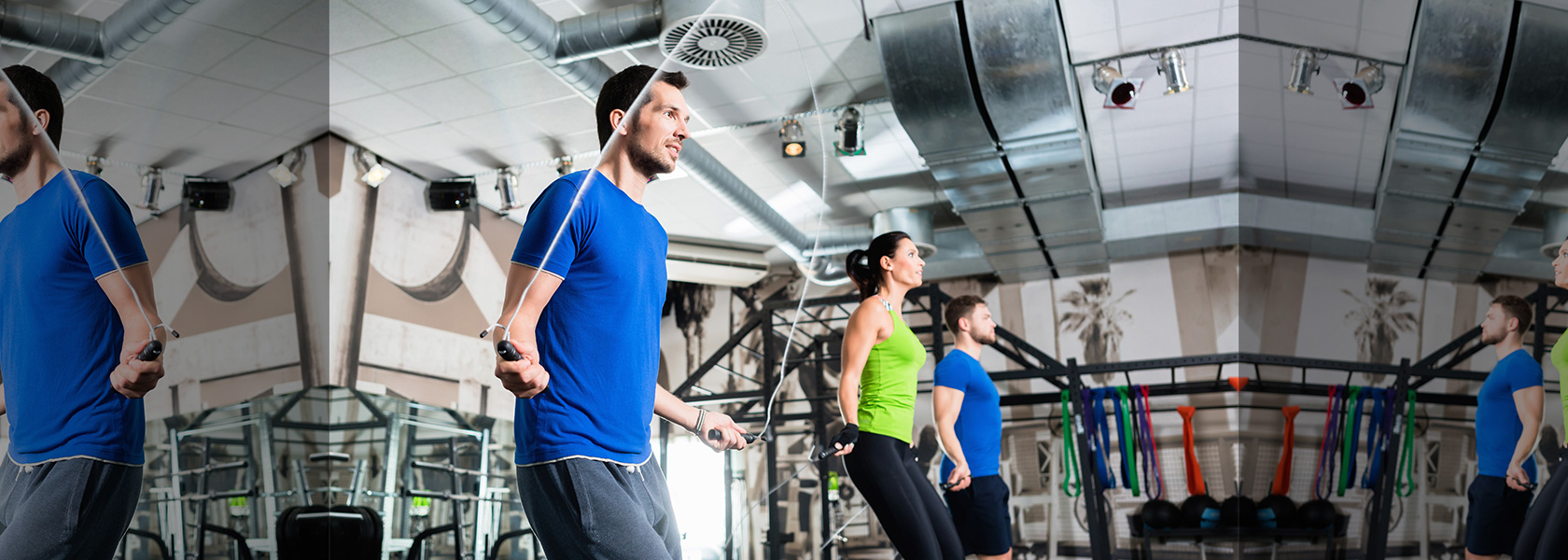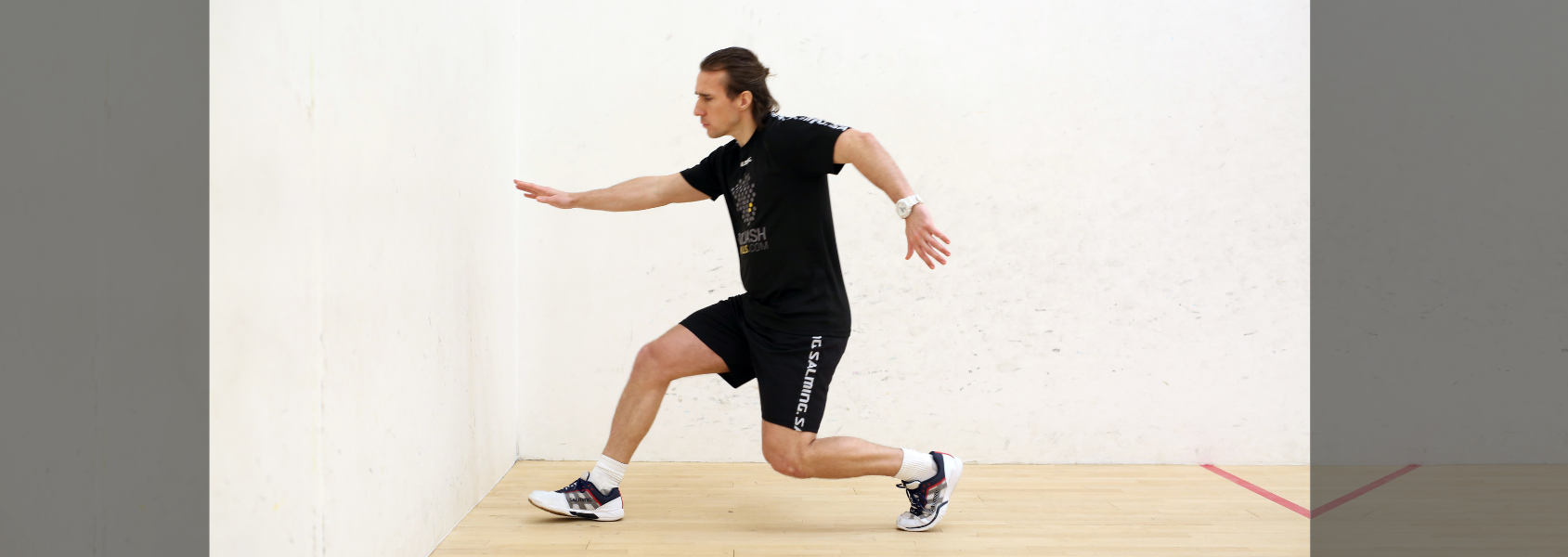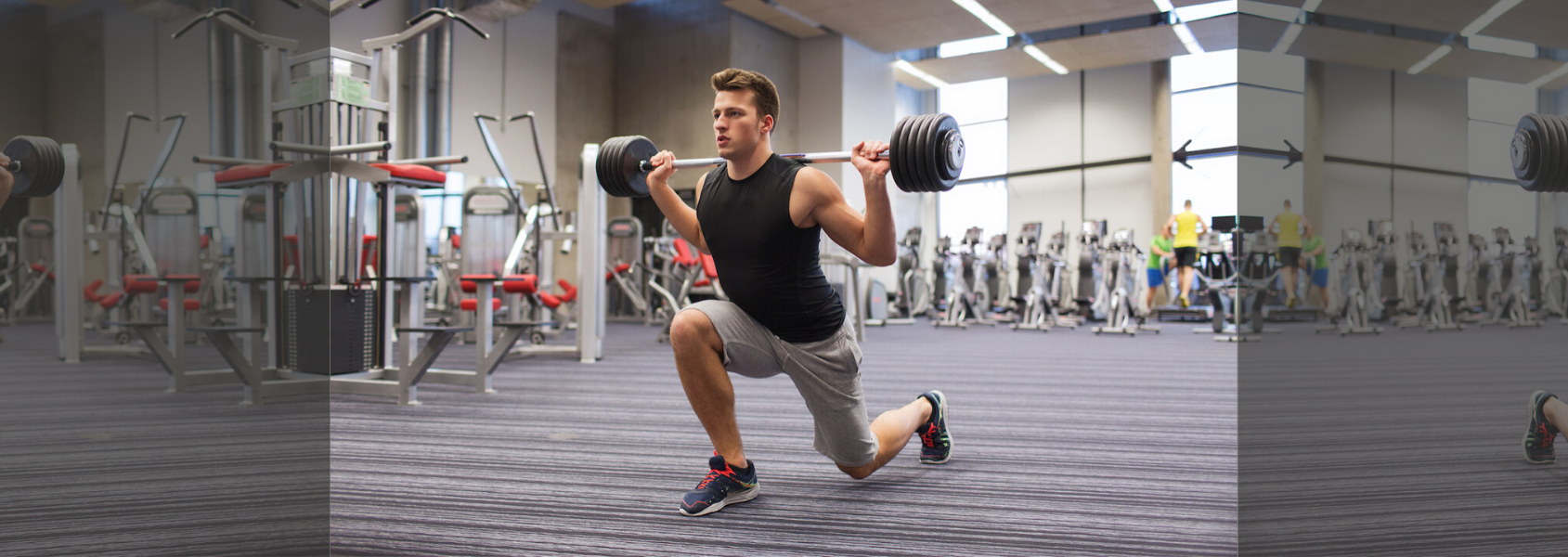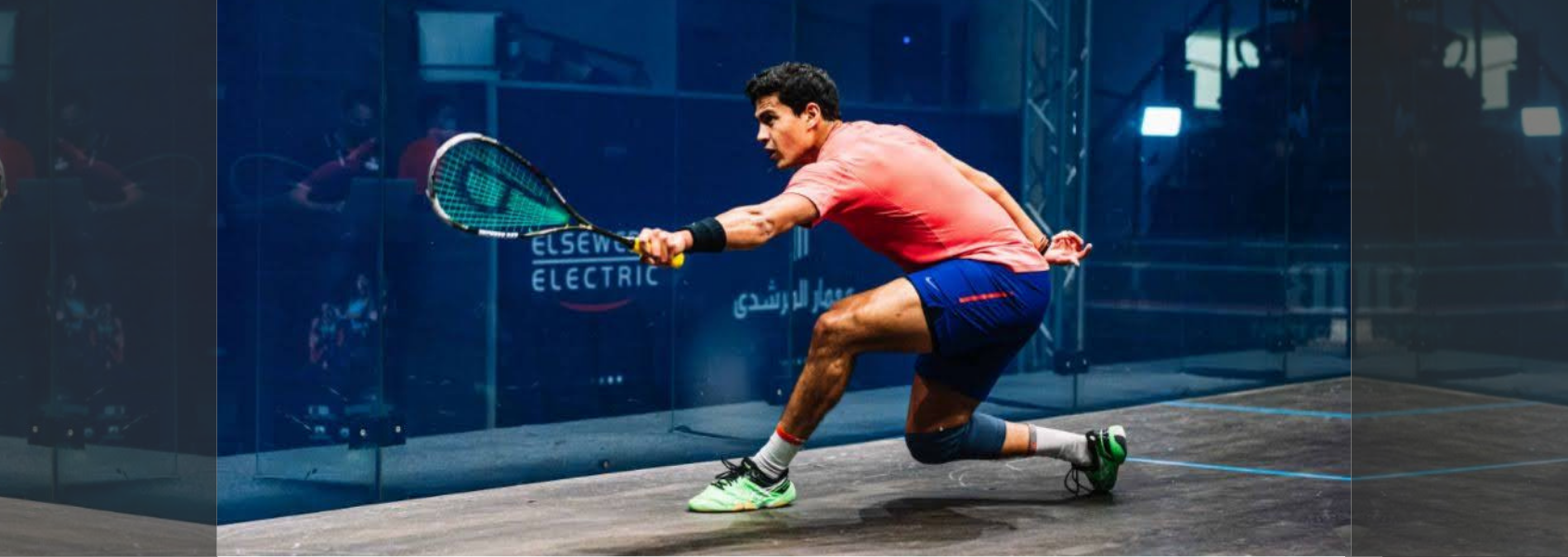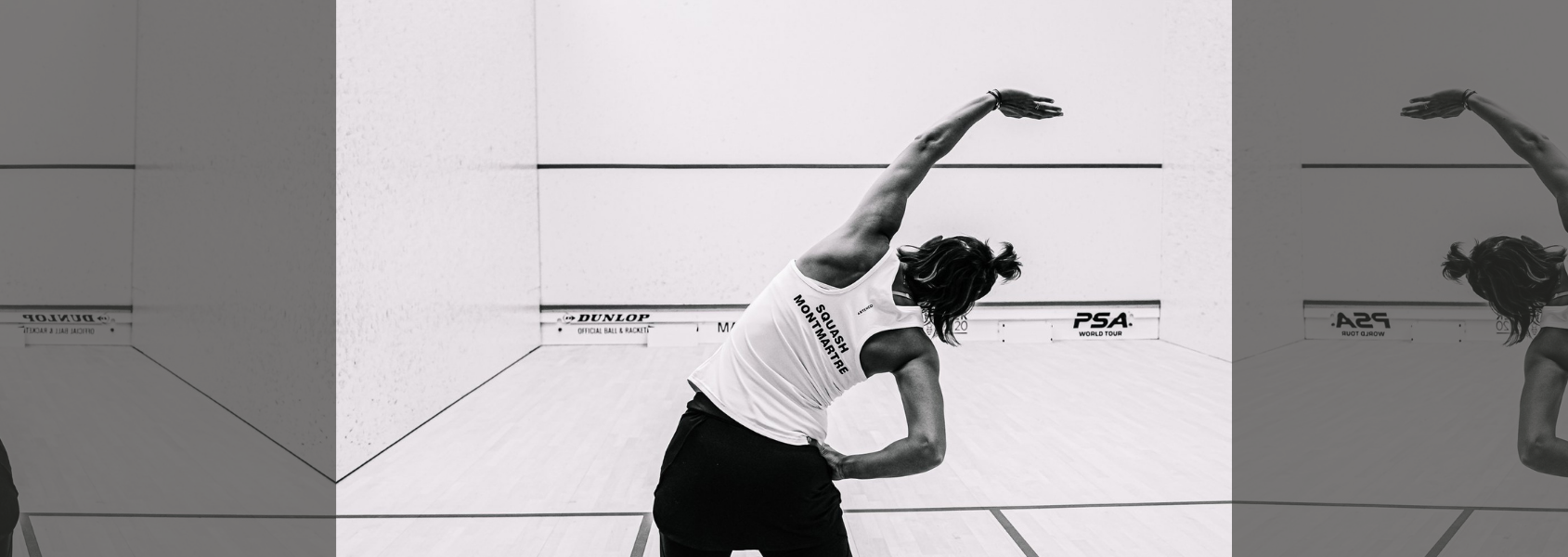The 3 lunge exercises you need to include in your training programme!
The lunge action is one of the very fundamentals that squash is built around. The ability to rapidly move into and hold a strong stable lunge position is crucial to giving yourself the optimal base for maximising control of your shots.
Circuit training for squash
It’s not always easy trying to fit in extra training time to work on your squash fitness. Any session you manage to add in then, you obviously want to ensure is as guaranteed effective and as efficient as possible. A great way to organise your physical workouts to optimise this effectiveness and efficiency is through the use of Circuits.
Flexibility for squash – part 1
When most people think ‘Flexibility’, they think ‘Stretching’. The idea that making the muscles ‘longer and looser’ is an essential part of warming-up, cooling down, and enhancing performance for a sport such as squash is one of those ideas that is pretty entrenched in most players minds.
Limited space training for squash players
Squash is a sport that requires a high level of physical conditioning to excel. Players serious about their squash spend a lot of time and effort on their training programmes, working hard to squeeze in all of their sessions each week. It can thus be frustrating when workouts have to be moved or missed when work/family/social commitments intrude, and confine time and space availability.
Are ankle weights beneficial for the squash player?
We get a ton of great feedback and questions sent in to us here at SquashSkills, many that well warrant a wider audience. In a new periodical feature on the blog, we’re going to be expanding on some of these discussions and making them into full articles.
This week’s then, sees us addressing a recent question that came in from a member about the use of ankle weights for the squash player:
“I was wondering if you have any advice on utilising ankle weights while playing/training? I have heard that some Egyptian players do this?”
Fitness programme update – Get stronger
We’ve got a great selection of training programmes now live on the site, with more being added periodically.
Whether you’re looking to focus on your speed, your endurance, or if you’re just looking for a general all-round physical boost, there’s a programme for you.
The best squash-specific exercise you’ve never heard of!
It can often be difficult to squeeze in much extra time for any additional squash-specific conditioning training beyond your usual on-court sessions, so it’s important that anything that you do add really maximises the time you have available. One of the exercises you’ll often see in many of our sessions and programmes here on the site that really fits the bill is the rear foot elevated split squat – a favourite of many top sports performance specialists and athletic trainers such as Eric Cressey and Mike Boyle.
Unstable surface training for squash players
In pretty much any large scale commercial gym you might wander into, you’re more or less guaranteed these days to see a number of various inflatable balls, foam blocks, wobble boards and other ‘Unstable Surface’ items of training equipment. But are they of any use for the squash player?
Preparing For Your Summer Squash Training
As with many sports, the arrival of Summer signals the end of the traditional squash season in the northern hemisphere.
While some players take a break or reduce their squash playing schedule in favour of different pursuits over the Summer months, for many others it’s seen as the perfect opportunity to get in a good block of structured training to really focus on getting into peak shape, and to help ensure they can hit the ground running ready for the new season in the Autumn.
3 top tips for your squash fitness training
If you’re serious about taking your squash to the next level, at some point you’re going to have to incorporate some form of structured physical training into your programme.
Fitness training specificity for squash players
As anybody who has played the sport will surely attest to, getting into the best possible physical condition for your squash can go a long way to ensuring you are able to play at your peak capabilities.
With this in mind, we try and cover a wide variety of different training methods and modalities here on SquashSkills to give you all the tools you need to perform at your very best.
Types of stretching & flexibility training for squash
In our recent ‘Flexibility for Squash’ blog article, we looked at the use of stretching as part of a squash-specific warm-up, where the traditional concept of ‘static’ stretching was somewhat outdated and had shown little appreciable benefit in controlled studies.
In part 2 we looked more into the mechanics of stretching, the actual effects on the muscle, and what the latest research says as regards the potential use of flexibility training as part of a wider athletic programme. As an addendum, in this article, we’ll be exploring the different types of stretching in a little more detail.
Trying new ideas, and being open to change
It can often be difficult for people to let go of closely held beliefs as regards technique, training and fitness, as new ideas can challenge people’s comfort zone and perceived knowledge of what can be pretty dogmatic subjects. This rigidity however, can often be detrimental to progress.
Don’t skip skipping!
There’s a huge range of different fitness tools and devices available these days, of a wildly varying degree of use and effectiveness. Amongst this backdrop of ‘must-have’ gadgets carefully marketed to part the fitness enthusiast from their money in their quest for the next latest and greatest workout tool, sometimes the simpler things get lost.
The humble Skipping Rope is one such oft-forgotten item, yet for the squash player in particular, it is an invaluable addition to your kit bag. Cheap, portable, and easy to use, no squash player should be without one!
Pros & cons of court sprints
Court Sprints. Two words that strike fear into the hearts of all squash players!
They are however one of the most traditional of all squash fitness training drills and are widely employed by players of all levels. Has their importance and suitability been overestimated though?
Unilateral training – Becoming a better balanced squash player
Something that we speak a lot about on SquashSkills, is the importance of dedicating specific training time to developing the individual athletic qualities instead of just training your conditioning ‘generally’ – physical attributes such as Speed, Power, Strength, and Stability are vital to becoming an all-round player, and for maximising your abilities on court.
Benefits of resistance training for squash – Part 1
Athletic training methods have become ever more scientific over the past 20 years, and coaches are placing an ever-increasing focus on any small factor that may be able to improve their athletes’ performance by even the slightest percentage in competition – even well-established training methods have been re-examined in greater and greater detail to draw every possible degree of benefit from them.
3 things you can do to become a better squash player
Looking to take your game to the next level? Make sure you’re including these 3 crucial elements in your training.
How squash-fit are you?
‘Improvement’ can often be a vague and imprecise concept to directly measure in sporting terms.
Particularly in regards to technique, whilst match results are obviously one significant indicator, players often have to rely more on subjective measures of how they ‘feel’ and other unquantifiable markers to monitor whether the particular training/coaching regime that they are following is proving effective or not.
